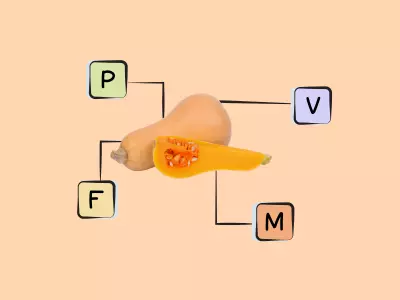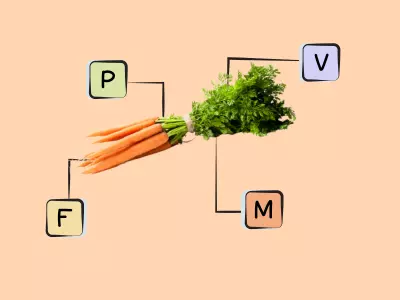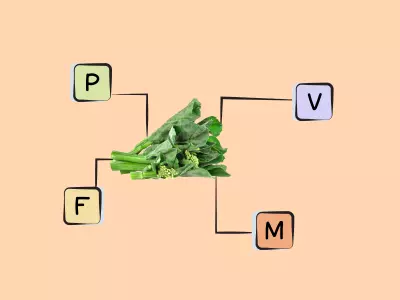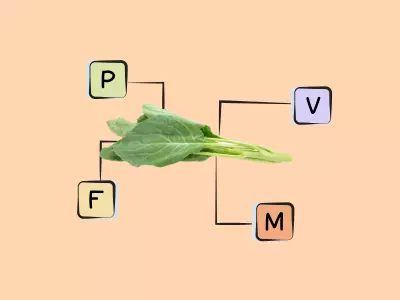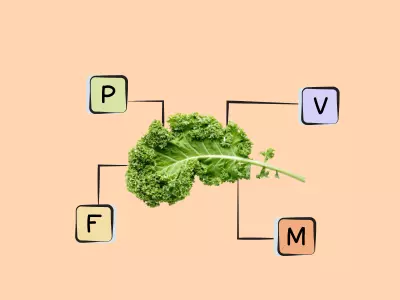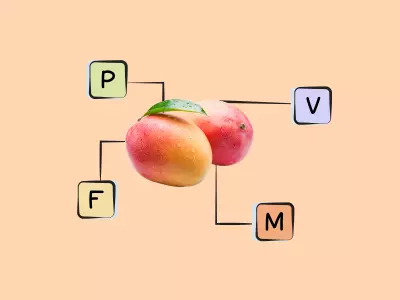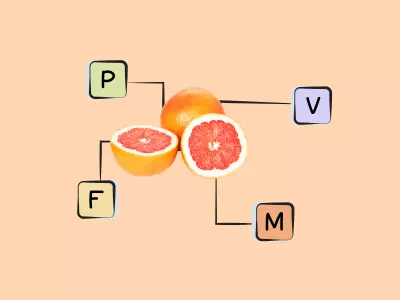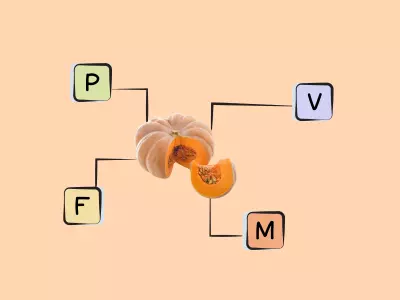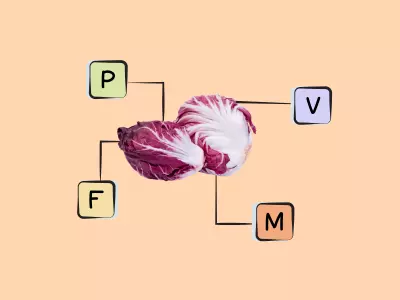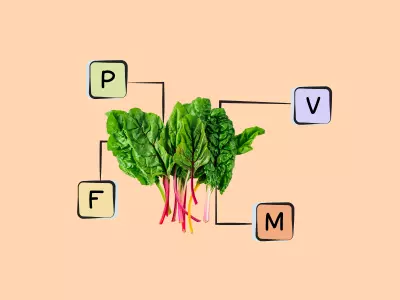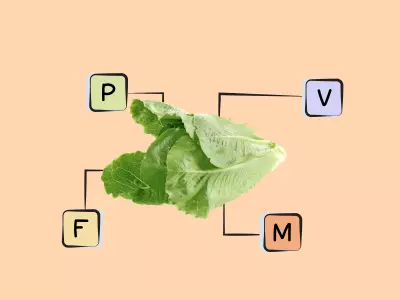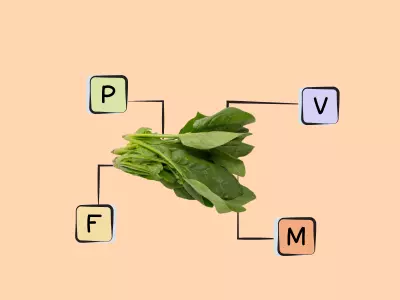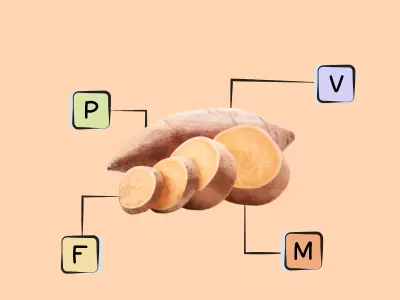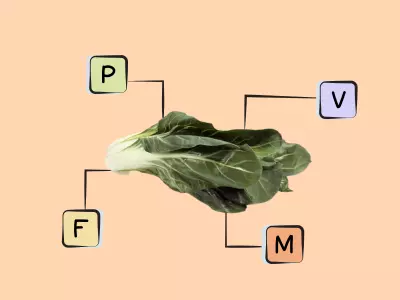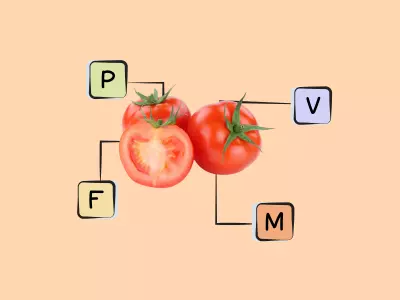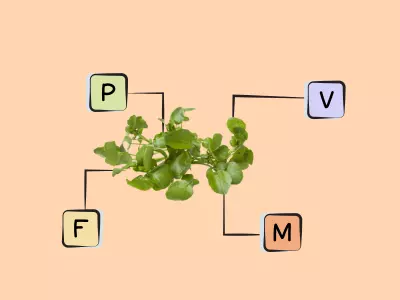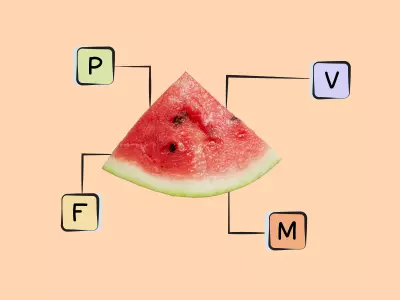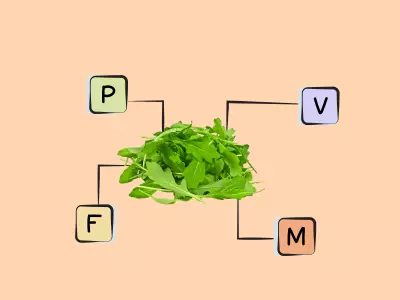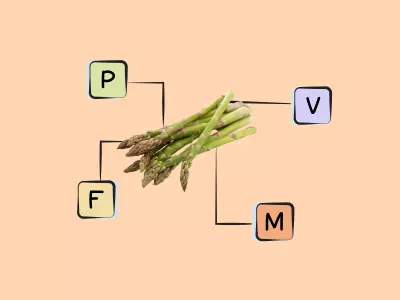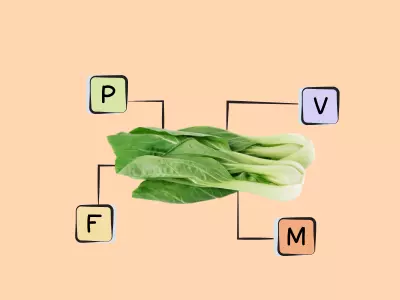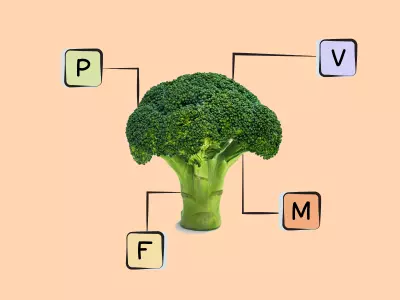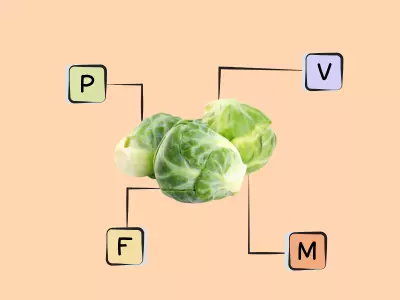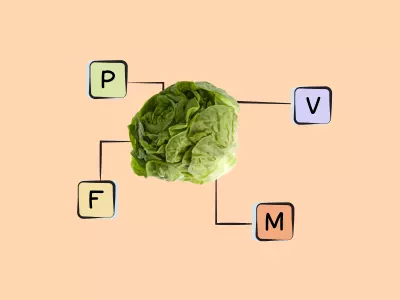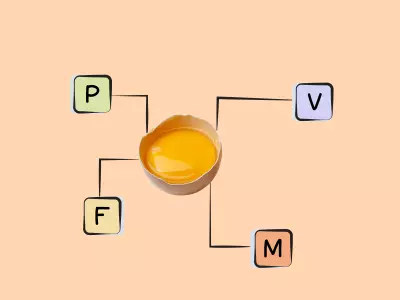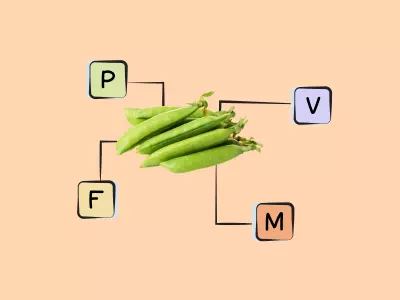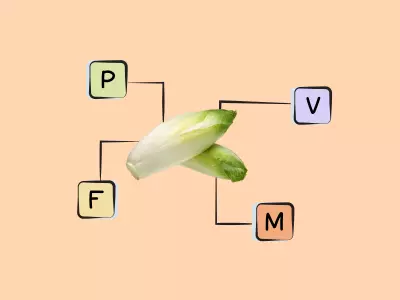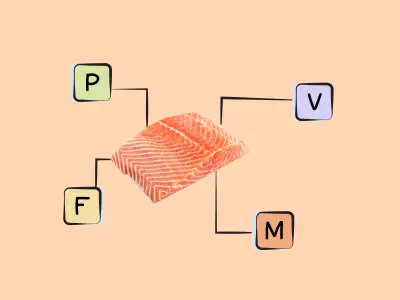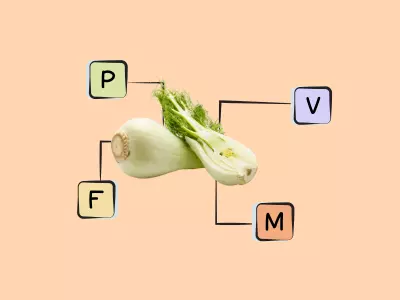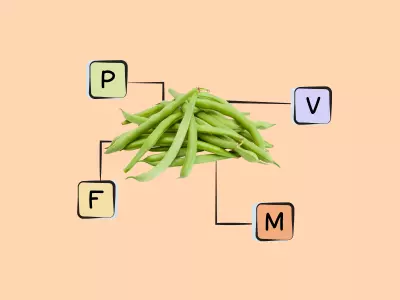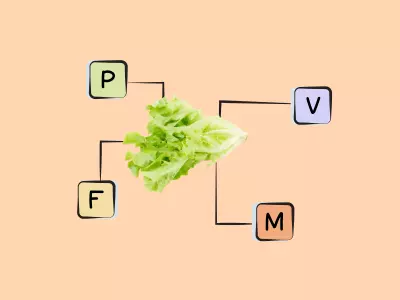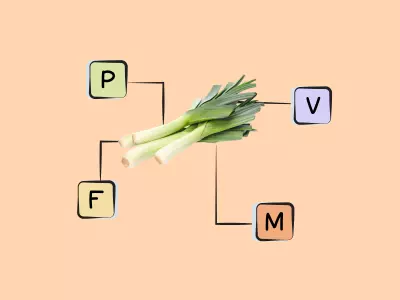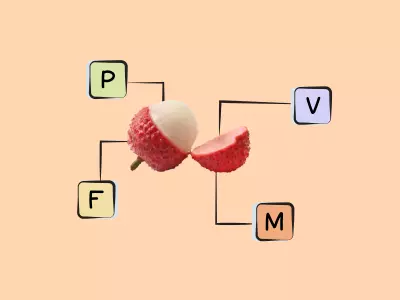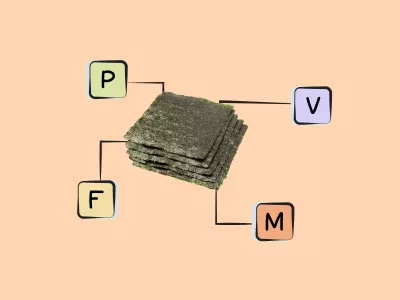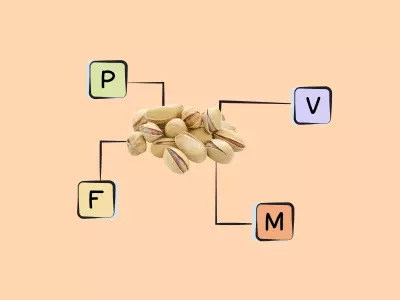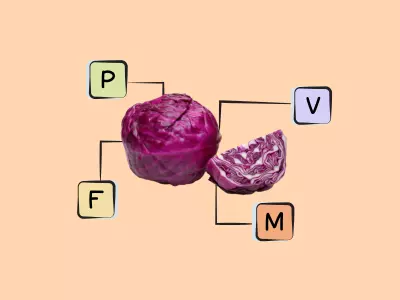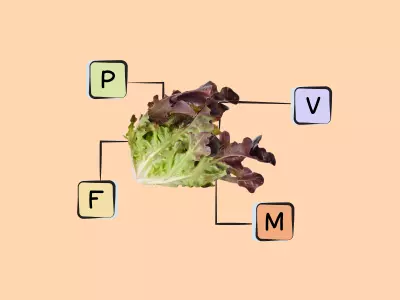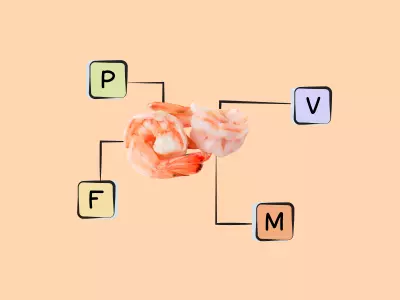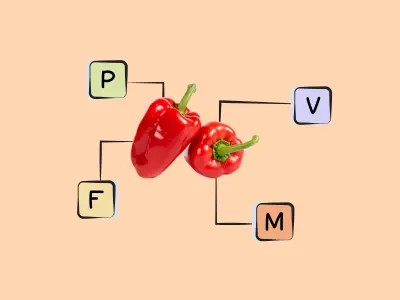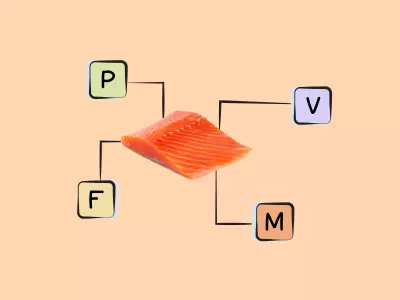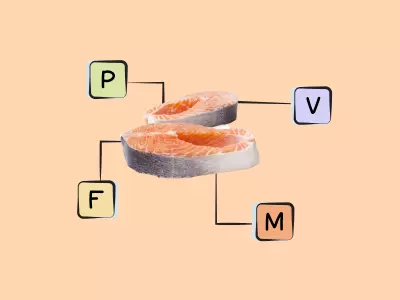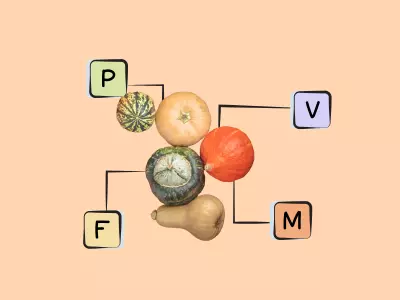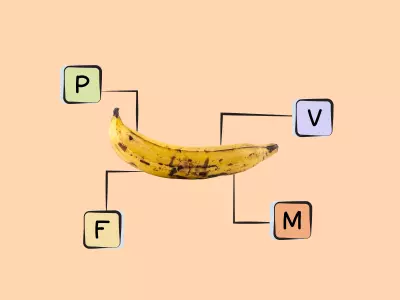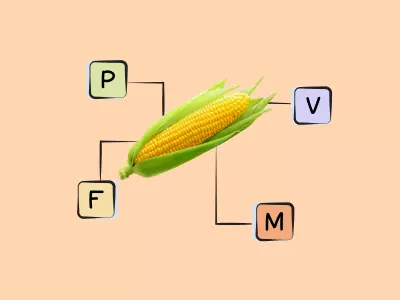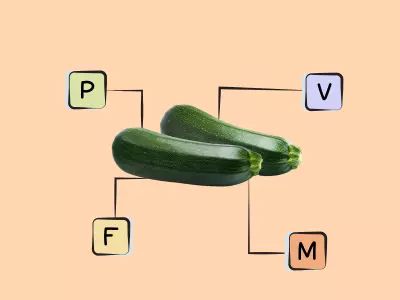Table of Contents[Hide][Show]
Carotenoids were one of the earliest phytonutrients ever investigated by scientists (with research dating back to the 1800s!). Across studies, eating foods high in carotenoids appears to reduce the risk of head and neck cancers, supports vision health (particularly age-related eye diseases), may protect against metabolic syndrome and diabetes, and can reduce inflammation. Carotenoids have strong antioxidant properties, and help facilitate communication between cells by promoting the synthesis of connexin proteins, which create gap junctions in cell membranes that allow small molecules to be exchanged (which is part of how cells “talk” to each other!). In the gut, dietary carotenoids can improve the gut immune system maturation and enhance immunoglobulin A production. In the microbiota of pregnant women, dietary and plasma carotenoid levels are associated with greater diversity.
Carotenoids are fat-soluble nutrients but it only takes 3 to 5 grams of fat in a meal to facilitate absorption. Bioavailability is also increased when consumed in the presence of soluble fiber.
Most of us are already familiar with beta-carotene, but there are actually more than 750 different carotenoids out there (about 40 of which are common in the human diet). They can broadly be divided into carotenes and xanthophylls.
Want to know the top 25 foods for this awesome nutrient?
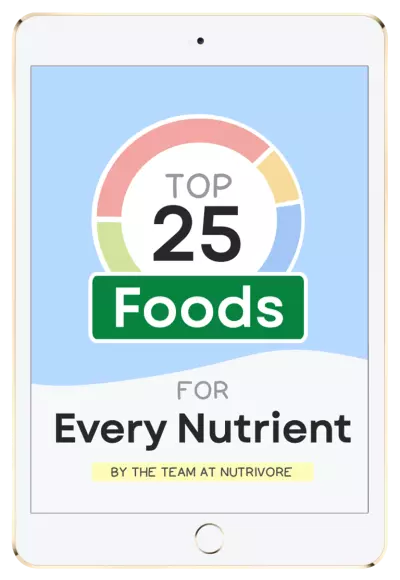
The Top 25 Foods for Every Nutrient
The Top 25 Foods for Every Nutrient e-book is a well-organized, easy-to-use, grocery store-friendly guide to help you choose foods that fit your needs of 43 important nutrients while creating a balanced nutrient-dense diet.
Get two “Top 25” food lists for each nutrient, plus you’ll find RDA charts for everyone, informative visuals, fun facts, serving sizes and the 58 foods that are Nutrient Super Stars!
Buy now for instant digital access.
Carotenes:
The most famous carotenoids belong to the carotene subclass, characterized by their polyunsaturated hydrocarbon molecular structure. Carotenes are most commonly are orange pigments. The most extensively studied (and relevant to human health), include the following:
Alpha-carotene (α-carotene)
Alpha-carotene (α-carotene) has antioxidant and potential anti-cancer activity; and studies show that higher serum levels of alpha-carotene are associated with lower risk of cardiovascular disease, cardiovascular disease mortality, cancer mortality and all-cause mortality. A 2021 study showed that adults aged 65 to 84 with the highest serum levels of alpha-carotene has improved cognitive function compared to those with the lowest. And a 2022 study in adults aged 50 to 85 showed that those with the highest serum alpha-carotene levels had higher muscle strength.
After central cleavage, alpha-carotene converted to biologically active retinol (vitamin A). A meta-analysis of 34 observational studies found that alpha-carotene is inversely associated with prostate cancer risk. It’s the second most common form of carotene.
Found in carrots, pumpkins, maize, tangerine, orange, sweet potatoes, winter squash, broccoli, green beans, avocado, lettuce, collards, spinach, persimmons, and turnip greens.
Beta-carotene (β-carotene)
Beta-carotene (β-carotene) is known for its provitamin A activity (meaning it can be converted into vitamin A by your body), but it also is a strong immune enhancer that neutralizes free radicals and reduces the risk of some cancers and cardiovascular disease. Research has also shown a favorable effect of beta-carotene on insulin sensitivity (possibly due to positively regulating adiponectin), potential benefits for lead poisoning (due to its antioxidant action), chemotherapeutic activity for neuroblastoma, radioprotective activity, an ability to inhibit cell proliferation and arrest cancer cells at multiple phases of the cell cycle, and an ability to inhibit cholesterol absorption in the intestine.
Found in dark leafy greens like kale and spinach, and fruits and vegetables colored red, orange, and yellow (including carrots, sweet potatoes, red and yellow peppers, winter squash, cantaloupe, mangoes, and apricots).
Lycopene
Lycopene is a potent antioxidant (it has ten times more free radical scavenging ability than alpha-tocopherol) with anti-inflammatory, cognitive enhancing, and neuroprotective properties. It’s been shown to benefit prostate cancer—more specifically, reducing the risk of aggressive forms of the disease. In observational studies, high lycopene intake is associated with a lower risk of chronic diseases like cardiovascular disease, cancer (especially laryngeal, oral, and pharyngeal cancers), and neurological disorders, although scientists are still researching its precise mechanisms of action. It may modulate the cellular redox environment, exert anti-neuroinflammatory effects via inhibiting lipopolysaccharide-induced expression of COX2 in microglia nuclei, and protect LDL cholesterol from oxidizing. In the gut, lycopene has antimicrobial activity against some pathogens, while promoting the growth of important probiotic species.
Found in tomatoes (especially processed tomatoes), watermelon, pink grapefruit, guava, and papaya.
Neurosporene
Neurosporene is a red-colored carotenoid with powerful antioxidant activity, demonstrating UV-B radiation protective abilities.
Found in chicory, poppy, and gourds.
Phytofluene and phytoene
Phytofluene and phytoene are carotenoid precursors to lycopene. They have powerful UV absorption abilities; they’ve been shown to accumulate in human skin and potentially protect it against damage through multiple mechanisms (acting as antioxidants, anti-inflammatory agents, and UV absorbers).
Found in tomatoes, star fruit, sweet potato, carrots, apricots, and oranges.
Xanthophylls:
Whereas carotenes are composed of only carbon and hydrogen, xanthophylls include oxygen atoms in the form of a hydroxyl group or epoxides hydroxyl groups, making them slightly more hydrophilic (able to dissolve in water) than carotenes, although they are still considered a fat-soluble nutrient. Xanthophylls more commonly are yellow pigments. Dietary intake of xanthophylls is reduces risk of cardiovascular disease, age-related macular degeneration, cognitive decline, and certain cancers. The most extensively studied (and relevant to human health), include the following:
Beta-cryptoxanthin (β-cryptoxanthin)
Beta-cryptoxanthin (β-cryptoxanthin) serves as a vitamin A precursor and has higher bioavailability than alpha- or beta-carotene. It has antioxidant activity, and its consumption is associated with a reduced risk of laryngeal, oral, and pharyngeal cancers; some studies also suggest it could act as a chemopreventive agent against lung cancer. In tissue cultures, it’s been shown to have a direct stimulatory effect on bone formation while inhibiting bone resorption, and postmenopausal women with osteoporosis have been shown to have lower levels of this carotenoid compared to non-osteoporotic women. β-cryptoxanthin also has anti-obesity activity and can halt progression of non-alcoholic fatty liver disease. It’s also a powerful antioxidant, is anti-inflammatory, and may beneficially modulate some aspects of immune function. Compared to other carotenoids, it tends to be much better absorbed by humans (in one study, beta-cryptoxanthin-rich foods were 725% more bioavailable than beta-carotene-rich foods).
Found in in orange and red fruits and vegetables, including mango, butternut squash, persimmons, Hubbard squash, hot chili peppers, tangerines, oranges, papayas, peaches, pumpkin, sweet corn, carrots, kumquats, avocados, peas, grapefruit, and kiwi.
Astaxanthin
Astaxanthin is a reddish pigment with potent antioxidant properties. A variety of studies have demonstrated its anti-inflammatory, anti-cancer, cardioprotective, anti-hypertensive, immuno-modulating, anti-diabetic, hepatoprotective, neuroprotective, bone-protective, eye-protective, performance enhancing, and endocrine-supportive properties. It’s been shown to alter the gut immune system, significantly lowering bacterial loads and alleviating gastric inflammation in H. pylori-infected mice. It can improve gut microbiome composition.
Found in seaweeds and algae, and biomagnified in shellfish and fish that feed on that algae (such as salmon, shrimp, lobster, and some crabs).
Canthaxanthin
Canthaxanthin is a red-orange carotenoid with powerful antioxidant activity, including potentially protecting LDL cholesterol from oxidation. It can induce catalase and superoxide dismutase, has immunomodulatory activity (including enhancing the function and proliferation of immune competent cells), and plays a role in gap junction communication (including the induction of the transmembrane protein connexin 43).
Found in paprika, mushrooms, crustaceans, fish, and eggs.
Fucoxanthin
Fucoxanthin is a type of carotenoid that gives seaweeds a brown pigment. Along with antioxidant properties, fucoxanthin has potential anti-obesity, anti-diabetic, anti-cancer, anti-inflammatory, cardiovascular-protective, and liver-protective properties. More specifically, fucoxanthin supplementation has been shown to significantly reduce cholesterol and triglyceride levels in the blood, correct glucose metabolism abnormalities in muscle tissue (giving it anti-diabetic potential), and can even induce fat loss while inhibiting the differentiation and proliferation of fat cells. Fucoxanthin reduces inflammation by inhibiting inducible nitric oxide synthase (iNOS) and cyclooxygenase 2 (COX-2) protein expressions, and also suppressing the production of a variety of inflammatory cytokines (like IL-1β, TNF-α, and IL-6).
Fucoxanthin also has antibacterial activity, acting against Staphylococcus aureus, Staphylococcus epidermidis, and Streptococcus agalactiae. In mice fed high-fat diets, it can alleviate obesity by modulating the gut microbiota, promoting the growth of Lactobacillus/Lactococcus, Bifidobacterium, and some butyrate-producing bacteria, while inhibiting the growth of obesity- and inflammation-related Lachnospiraceae and Erysipelotrichaceae. It’s actually one of several unique phytonutrients responsible for the benefits of sea vegetables!
Found in brown seaweeds such as hijiki, kombu, and wakame.
Lutein and Zeaxanthin
Lutein and zeaxanthin are known as macular pigments. Due to their high concentration in the retina and their ability to filter harmful blue-light rays, lutein and zeaxanthin play a major role in maintaining eye health, protecting critical parts of the eye from light-induced oxidative damage. As a result, they’ve been implicated in prevention and treatment of age-related macular degeneration, protecting against cataracts and reducing the risk of retinitis pigmentosa. In addition, numerous studies have shown a wide range of other potential pharmacological activities for lutein and zeaxanthin, including antioxidant, anti-inflammatory, anti-cancer, anti-diabetic, atherosclerotic-protective, lung-protective, immunomodulating, and skin effects, as well as cognitive benefits. A 2016 systematic review and meta-analysis covering 71 articles and a total of 387,569 participants, showed a 12% lower risk of coronary heart disease, 18% lower risk of stroke, and a 25% reduced risk of metabolic syndrome, for the highest compared to lowest tertile of lutein intake.
Found in spinach, turnip greens, romaine lettuce, eggs, red pepper, pumpkin, mango, papaya, oranges, kiwi, peaches, squash, brassicas, prunes, sweet potatoes, honeydew melon, rhubarb, plum, avocado, pear, cilantro, wolfberry, kale, turnip greens, and corn.
Everything You Need to Jump into Nutrivore TODAY!
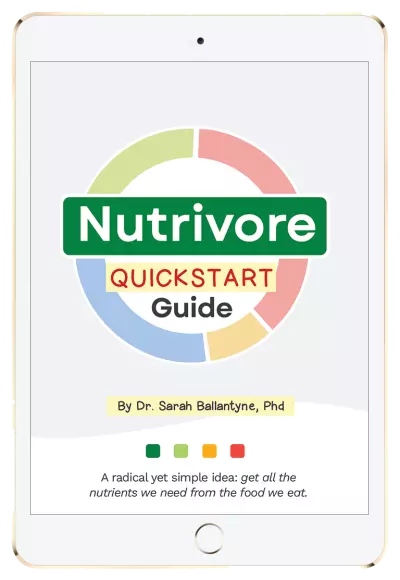
Nutrivore Quickstart Guide
The Nutrivore Quickstart Guide e-book explains why and how to eat a Nutrivore diet, introduces the Nutrivore Score, gives a comprehensive tour of the full range of essential and important nutrients!
Plus, you’ll find the Top 100 Nutrivore Score Foods, analysis of food groups, practical tips to increase the nutrient density of your diet, and look-up tables for the Nutrivore Score of over 700 foods.
Buy now for instant digital access.
Best Food Sources of Carotenoids
The following foods have high concentrations of carotenoids, containing at least 4.5 mg per serving, making them our best food sources of this valuable class of phytonutrients!
Want to know the top 500 most nutrient-dense foods?

Top 500 Nutrivore Foods
The Top 500 Nutrivore Foods e-book is an amazing reference deck of the top 500 most nutrient-dense foods according to their Nutrivore Score. Think of it as the go-to resource for a super-nerd, to learn more and better understand which foods stand out, and why!
If you are looking for a quick-reference guide to help enhance your diet with nutrients, and dive into the details of your favorite foods, this book is your one-stop-shop!
Buy now for instant digital access.
Good Food Sources of Carotenoids
The following foods are also excellent or good sources of carotenoids, containing at least 0.9 mg (and up to 4.5 mg) per serving.
Nutrivore Is a Game-Changer—These 5 Free Guides Show You Why
Sign up for the free weekly Nutrivore Newsletter and get 5 high-value downloads—delivered straight to your inbox—that make healthy eating simple and sustainable.
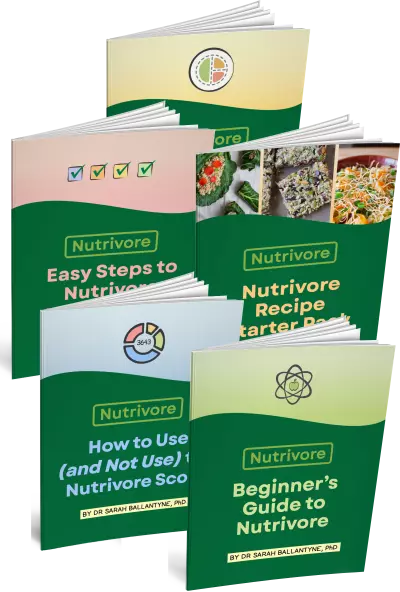
Citations
Expand to see all scientific references for this article.
Bae M, Kim MB, Park YK, Lee JY. Health benefits of fucoxanthin in the prevention of chronic diseases. Biochim Biophys Acta Mol Cell Biol Lipids. 2020 Nov;1865(11):158618. doi: 10.1016/j.bbalip.2020.158618. Epub 2020 Jan 10.
Black HS, Boehm F, Edge R, Truscott TG. The Benefits and Risks of Certain Dietary Carotenoids that Exhibit both Anti- and Pro-Oxidative Mechanisms-A Comprehensive Review. Antioxidants (Basel). 2020 Mar 23;9(3):264. doi: 10.3390/antiox9030264.
Burri BJ, La Frano MR, Zhu C. Absorption, metabolism, and functions of β-cryptoxanthin. Nutr Rev. 2016 Feb;74(2):69-82. doi: 10.1093/nutrit/nuv064. Epub 2016 Jan 7.
Burri BJ. Beta-cryptoxanthin as a source of vitamin A. J Sci Food Agric. 2015 Jul;95(9):1786-94. doi: 10.1002/jsfa.6942. Epub 2014 Nov 5.
Dahham SS, Tabana YM, Iqbal MA, Ahamed MB, Ezzat MO, Majid AS, Majid AM. The Anticancer, Antioxidant and Antimicrobial Properties of the Sesquiterpene β-Caryophyllene from the Essential Oil of Aquilaria crassna. Molecules. 2015 Jun 26;20(7):11808-29. doi: 10.3390/molecules200711808.
Dinsmoor A, Thompson S, Edwards C, Burd N, Khan N, Erdman J Jr, Holscher H. Associations Between Serum Lutein and Human Gut Microbiota (P02-004-19). Curr Dev Nutr. 2019 Jun 13;3(Suppl 1):nzz029.P02-004-19. doi: 10.1093/cdn/nzz029.P02-004-19.
Esatbeyoglu T, Rimbach G. Canthaxanthin: From molecule to function. Mol Nutr Food Res. 2017 Jun;61(6). doi: 10.1002/mnfr.201600469. Epub 2016 Nov 15.
Karpiński TM, Adamczak A. Fucoxanthin-An Antibacterial Carotenoid. Antioxidants (Basel). 2019 Jul 24;8(8):239. doi: 10.3390/antiox8080239.
Kim JK. An update on the potential health benefits of carotenes. EXCLI J. 2016 Jan 6;15:1-4. doi: 10.17179/excli2015-664.
Krauze-Baranowska M, Majdan M, Hałasa R, Głód D, Kula M, Fecka I, Orzeł A. The antimicrobial activity of fruits from some cultivar varieties of Rubus idaeus and Rubus occidentalis. Food Funct. 2014 Oct;5(10):2536-41. doi: 10.1039/c4fo00129j. Epub 2014 Aug 18.
Leermakers ET, Darweesh SK, Baena CP, Moreira EM, Melo van Lent D, Tielemans MJ, Muka T, Vitezova A, Chowdhury R, Bramer WM, Kiefte-de Jong JC, Felix JF, Franco OH. The effects of lutein on cardiometabolic health across the life course: a systematic review and meta-analysis. Am J Clin Nutr. 2016 Feb;103(2):481-94. doi: 10.3945/ajcn.115.120931. Epub 2016 Jan 13.
Leoncini E, Nedovic D, Panic N, Pastorino R, Edefonti V, Boccia S. Carotenoid Intake from Natural Sources and Head and Neck Cancer: A Systematic Review and Meta-analysis of Epidemiological Studies. Cancer Epidemiol Biomarkers Prev. 2015 Jul;24(7):1003-11. doi: 10.1158/1055-9965.EPI-15-0053. Epub 2015 Apr 14.
Lyu Y, Wu L, Wang F, Shen X, Lin D. Carotenoid supplementation and retinoic acid in immunoglobulin A regulation of the gut microbiota dysbiosis. Exp Biol Med (Maywood). 2018 Apr;243(7):613-620. doi: 10.1177/1535370218763760. Epub 2018 Mar 13.
McCann SE, Freudenheim JL, Marshall JR, Graham S. Risk of human ovarian cancer is related to dietary intake of selected nutrients, phytochemicals and food groups. J Nutr. 2003 Jun;133(6):1937-42. doi: 10.1093/jn/133.6.1937.
Perry A, Rasmussen H, Johnson EJ. Xanthophyll (lutein, zeaxanthin) content in fruits, vegetables and corn and egg products. Journal of Food Composition and Analysis. 2009. Vol 22(1): 9-15. doi.org/10.1016/j.jfca.2008.07.006.
Sampathkumar SJ, Srivastava P, Ramachandran S, Sivashanmugam K, Gothandam KM. Lutein: A potential antibiofilm and antiquorum sensing molecule from green microalga Chlorella pyrenoidosa. Microb Pathog. 2019 Oct;135:103658. doi: 10.1016/j.micpath.2019.103658. Epub 2019 Aug 6.
Schmidt KM, Haddad EN, Sugino KY, Vevang KR, Peterson LA, Koratkar R, Gross MD, Kerver JM, Comstock SS. Dietary and plasma carotenoids are positively associated with alpha diversity in the fecal microbiota of pregnant women. J Food Sci. 2021 Feb;86(2):602-613. doi: 10.1111/1750-3841.15586. Epub 2021 Jan 15.
Sun W, Yan C, Frost B, Wang X, Hou C, Zeng M, Gao H, Kang Y, Liu J. Pomegranate extract decreases oxidative stress and alleviates mitochondrial impairment by activating AMPK-Nrf2 in hypothalamic paraventricular nucleus of spontaneously hypertensive rats. Sci Rep. 2016 Oct 7;6:34246. doi: 10.1038/srep34246.
Sun X, Zhao H, Liu Z, Sun X, Zhang D, Wang S, Xu Y, Zhang G, Wang D. Modulation of Gut Microbiota by Fucoxanthin During Alleviation of Obesity in High-Fat Diet-Fed Mice. J Agric Food Chem. 2020 May 6;68(18):5118-5128. doi: 10.1021/acs.jafc.0c01467. Epub 2020 Apr 28.
Ulbricht C. An Evidence-Based Systematic Review of Lutein by the Natural Standard Research Collaboration. J Diet Suppl. 2015 Dec;12(4):383-480. doi: 10.3109/19390211.2014.988577. Epub 2015 Jan 23.
Wiese M, Bashmakov Y, Chalyk N, Nielsen DS, Krych Ł, Kot W, Klochkov V, Pristensky D, Bandaletova T, Chernyshova M, Kyle N, Petyaev I. Prebiotic Effect of Lycopene and Dark Chocolate on Gut Microbiome with Systemic Changes in Liver Metabolism, Skeletal Muscles and Skin in Moderately Obese Persons. Biomed Res Int. 2019 Jun 2;2019:4625279. doi: 10.1155/2019/4625279.
Wu S, Liu Y, Michalek JE, Mesa RA, Parma DL, Rodriguez R, Mansour AM, Svatek R, Tucker TC, Ramirez AG. Carotenoid Intake and Circulating Carotenoids Are Inversely Associated with the Risk of Bladder Cancer: A Dose-Response Meta-analysis. Adv Nutr. 2020 May 1;11(3):630-643. doi: 10.1093/advances/nmz120.
Zhang H, Tang Y, Zhang Y, Zhang S, Qu J, Wang X, Kong R, Han C, Liu Z. Fucoxanthin: A Promising Medicinal and Nutritional Ingredient. Evid Based Complement Alternat Med. 2015;2015:723515. doi: 10.1155/2015/723515. Epub 2015 May 27.
Help me to keep building Nutrivore.com
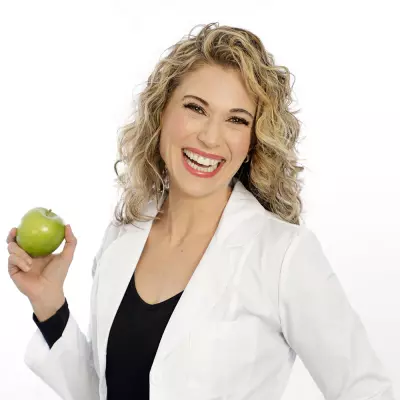
This is such a fascinating topic and I’m working on writing a more in-depth version of this article. If you’re enjoying the content my team and I have created thus far and would like to see more, you can support our efforts to keep building out this site by joining the Nutrivore community on Patreon!
Plus every month, you’ll gain exclusive access to a *NEW* Q&A and behind-the-scenes podcast episode, a new e-book in a series, nutrient fun factsheet, and more! Sign up now and also get 5 free Nutrivore guides as a welcome gift! Win-win-win!



